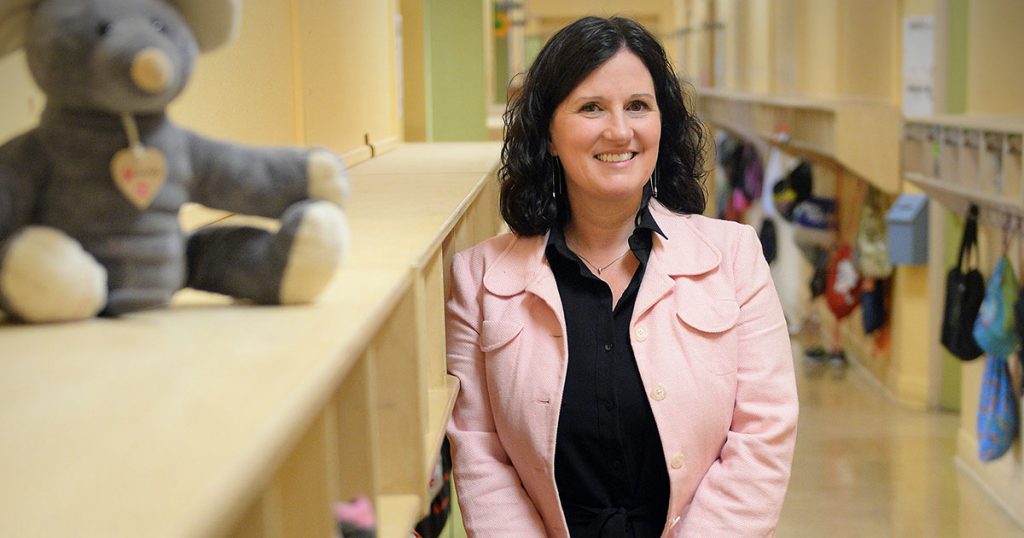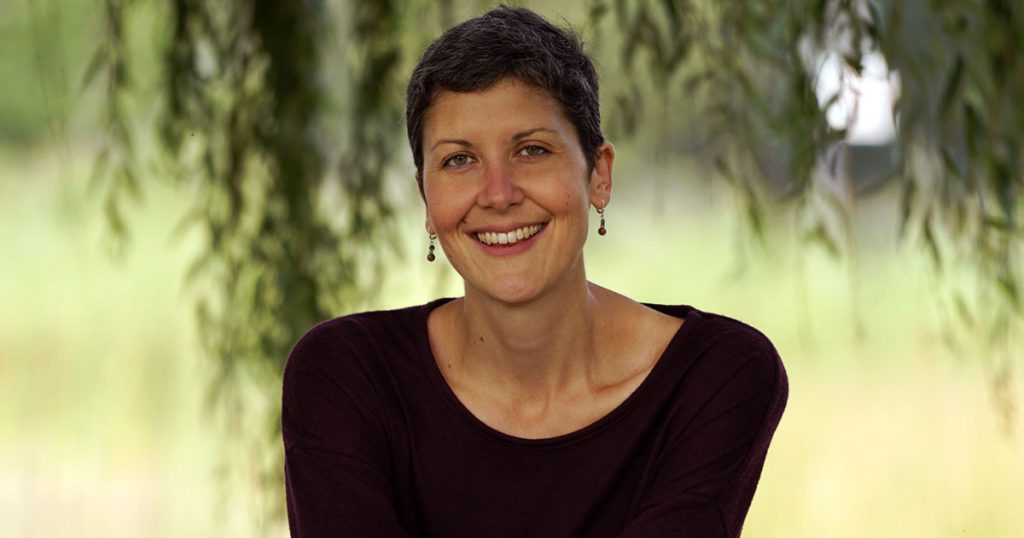Did you know that personnel in the education and early childhood sectors are at greater risk of developing a voice disorder? Far from trivial, the situation can have numerous consequences, making it important to act as soon as the first symptoms appear.
“In education and early childhood care, we use our voices a great deal for several hours a day, often in conditions that are far from optimal. Noise, stress, and other factors, such as poor ventilation or air quality, are significant irritants that may lead to voice disorders,” says Ingrid Verduyckt1.
This health issue is much more widespread than we might think. “According to research conducted here and in other Western countries, teachers represent 20%-50% of patients with voice disorders, compared to 6%-15% of the general population. Research has also found that 20%-30% of teachers have been absent from work because of a voice disorder, compared to 0%-5% of the general population,” she says.
An ounce of prevention …

Although the teaching profession is among those in which the voice is most used, it is hardly discussed in teacher training programs.
“Contrary to stage actors, for example, future educators are not taught to project their voices. Vocal hygiene is rarely discussed. The same is true for other disciplines in the field of education or early childhood whose future graduates will be required to use their voices continually. And yet, prior awareness of the issue is not only essential, it is a highly effective preventive measure,” adds Ingrid Verduyckt.
Claudine Blouin2 concurs: “Students seeking a career in education or early childhood care must be aware, early in their training, that their voices are their main work tool and will require care throughout their careers. They must learn the principles of proper vocal hygiene and voice projection techniques, be aware of the acoustic conditions of their work environments, and understand the importance of consulting a physician as soon as the first symptoms appear.”
According to Claudine Blouin, it would be wise to offer workshops on voice projection and vocal hygience to early childhood educators as well as support workers and teachers in schools and institutions of higher education.
“A half-day workshop bringing together a speech therapist and 10 people, for example, would be very effective. It would allow to sensitize educators about the importance of proper breathing, synchronizing their breathing with their voices and posture, teaching best practices to protect their voices, and learning what to avoid.”
Are women more at risk?
Though educators and early childhood personnel in the early stages of their careers are at significant risk, given their lack of professional experience, the prevalence of voice disorders increases with age, peaking between the ages of 50 and 59.
In general, women are more susceptible to these problems because of the structure of their larynx and the speed at which their vocal cords vibrate.
“Our vocal cords resemble small membranes that open and close at an incredible speed when we talk. Women’s vocal cords collide an average of 220 times per second, whereas men’s vibrate 100 times per second. As a result, microtraumas occur and the mucous membrane gets damaged,” explains Ingrid Verduyckt.
A disastrous marathon
She goes on to explain that the higher we speak, the faster our vocal cords vibrate and the more they collide. Similarly, the louder we speak, the wider the vibration and the greater the force of the impact, resulting in more injuries.
“Added to this is the fact that the longer we talk, the more distance our vocal cords travel. It’s important to know that by measuring and adding every vibration in millimetres, science has determined that the daily recommended vocal distance is 500 metres. Yet, studies have shown that, on average, the vocal cords of educators travel more than four kilometres a day!” says the researcher.
This significant amount of mechanical stress can produce a series of symptoms: throat clearing, hoarseness, neck tension, feelings of dryness or pain in the throat, higher pitched or huskier voice, difficulty being heard or speaking loudly, vocal fatigue, voice loss, etc.
If left untreated, inflammation of the vocal cords can lead to swelling, nodules, or polyps, for example. It is best to be vigilant, avoid forcing your voice, and more importantly, consult a physician right away.
Early childhood centres and schools: maximum sound levels

Not surprisingly, classrooms and early childhood centres are noisy environments - but just how noisy? Studies in Québec and elsewhere have found that sound levels in home and other childcare centres vary between 56 dB and 71 dB, on average, with peaks as high as 80 dB to 95 dB. The same is true in classrooms with sound levels varying between 56 dB and 71 dB, with peaks as high as 97 dB. In staff rooms, they can reach 64 dB.
Can these sound levels affect one’s voice? Ingrid Verduyckt is categorical: “The more noise there is in a room, the more we are apt to raise our voices and increase our pitch, leading to numerous negative consequences on our vocal cords. Beyond 60 dB, our well-being is also affected. We become more irritable, anxious, and tired.”
Is noise detrimental to learning?
In addition to affecting the voices of personnel, noise is detrimental to the processes of teaching, comprehension, and learning.
“There is more to learning than simple word recognition. We need to understand the words. When we hear words, a whole cognitive process is triggered to assimilate the message. But when there is noise, the brain has to make an extra effort to isolate important words and understand the message,” says the researcher.
Children are more at risk of being affected by noise, as are individuals who are hearing impaired, who have learning disabilities, or whose mother tongue is different from the language of instruction.
“In addition to affecting the voices of personnel, exposure to noise has long term consequences on the cerebral process required to control attention in children. Research has found that a hoarse voice can impact comprehension and information retention in students,” she says.
Added to this is the way children perceive individuals with voice disorders. “In their eyes, these people are less interesting, less attractive, less likeable, less nice … Affected teachers, psychologists, early childhood educators or technicians in special education, for example, need to work much harder on other areas to be liked by students,” says Ingrid Verduyckt.
When to worry? When to consult?
Consulting a physician as soon as voice loss lasts more than a few days is critical.
“A typical case involves a person who, during their first year of teaching, observes that their voice is tired at night. Over time, they find that they require periods of rest to get their voice back: a night’s sleep, a weekend, a week’s vacation … until nothing works anymore. Unfortunately, once this stage is reached, their condition becomes harder to treat,” warns Ingrid Verduyckt.

Claudine Blouin adds that if vocal fatigue persists and is accompanied by voice loss or raspiness, it is important to consult an ENT specialist. “This step is crucial to get a proper diagnosis. It is essential to receive speech therapy to treat the voice disorder permanently. One should not hesitate to ask a physician.”
CNESST: a necessary claim
Once it has been determined that overusing one’s voice at work is the cause of the voice impairment, the latter becomes a work-related injury. Mélanie Baril3 insists on the importance of obtaining written confirmation from the attending physician, consulting your union before completing the “Réclamation du travailleur de la CNESST” (Commission des normes, de l’équité, de la santé et de la sécurité du travail), and proceeding with your union to ensure adequate representation.
“The Regulation Respecting Medical Aid states that, during their period of disability, victims of a work-related injury have the right to attend sessions with a speech therapist paid by the CNESST and can obtain technical communication assistance with prior authorization from the Commission. A worker who suffers from permanent damage because of their injury may also obtain specialized equipment, such as a voice amplifier, as a tool for rehabilitation,” she says.
Is the damage irreparable?
What happens if your voice has been damaged for a long time? Is it too late to consult a specialist? Claudine Blouin answers without hesitation: “You have nothing to lose by consulting. You may not regain the voice you had 20 years ago, but your life will definitely improve. In the case of an old nodule, therapy might not be enough to correct the problem. However, in the case of a more recent nodule or poor vocal projection, therapy can significantly improve the quality of your voice. And that’s priceless.”
1 Ingrid Verduyckt is a professor at École d’orthophonie et d’audiologie de la Faculté de médecine de l’Université de Montréal. She was guest speaker at the Réseau SST de la CSQ in June 2017.
2 Claudine Blouin is a speech therapist and member of the Syndicat du personnel professionnel des commissions scolaires de la région de Québec (SPPRÉQ-CSQ).
3 Mélanie Baril is OHS advisor at the CSQ.
